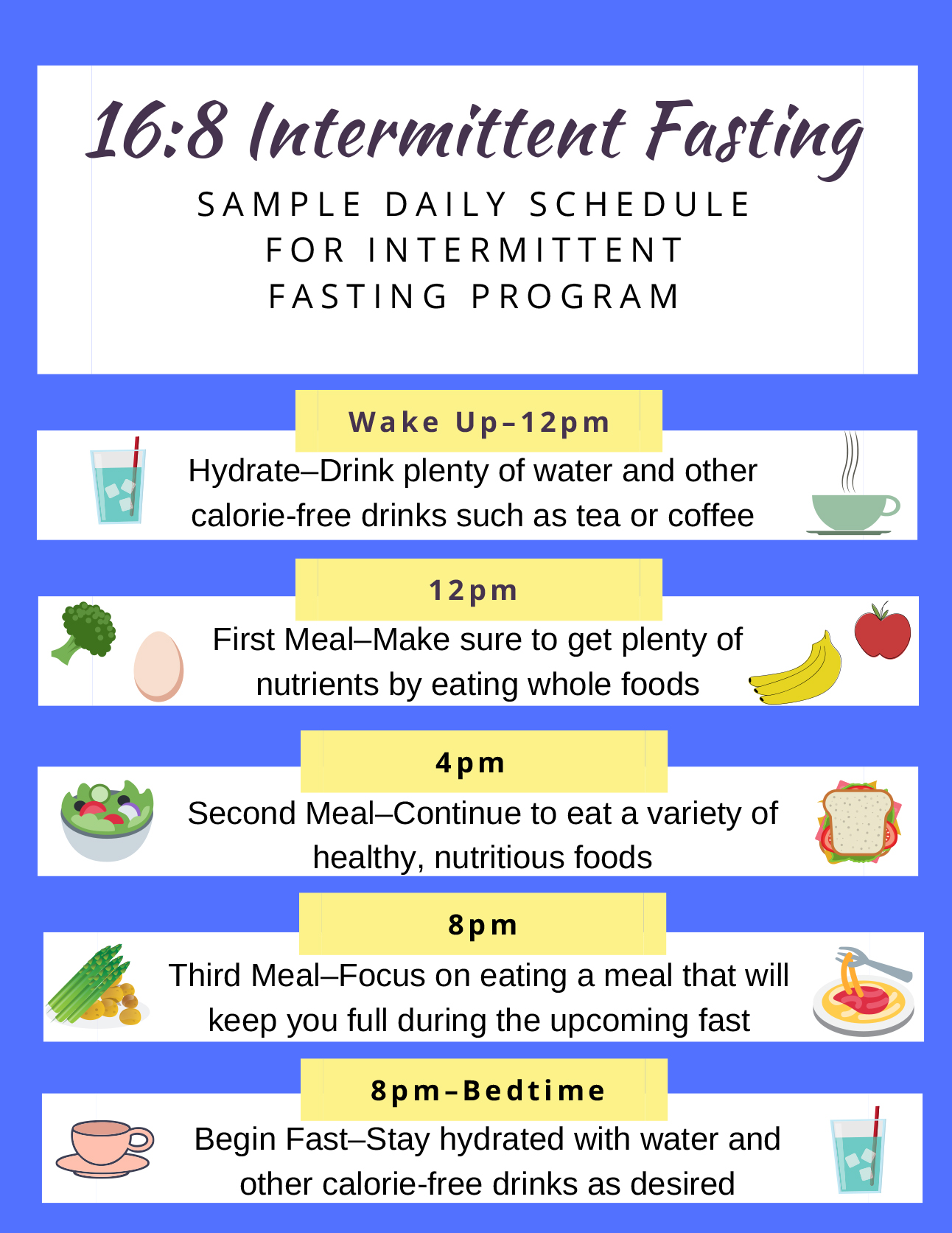A Beginner’s Guide to Intermittent Fasting

Emmi Carr
Bachelor’s Student in Public Health
Are you intrigued by intermittent fasting? Thinking of trying it?
Intermittent fasting—or periodic abstinence from food and/or drink—can take many forms, from the number of fasting days to which days you restrict calories to the recommended amount of calories you cut from your diet.1
Some of intermittent fasting’s proposed benefits include weight loss, improved metabolic health, diabetes prevention, and increased longevity.
Intermittent fasting has been proven safe and effective, and some of its proposed benefits include weight loss, improved metabolic health, diabetes prevention, and increased longevity.1,2 However, intermittent fasting can be difficult, and it is not recommended for certain groups, such as those with advanced diabetes, pregnant women, and individuals who have a history of eating disorders.1,2 It is important to know which options might work best for you as a beginner and to consult with your provider if you are or might be in one of the groups for whom fasting is not recommended.
Styles of Intermittent Fasting
Here are brief descriptions of some of the more common styles of intermittent fasting:
- Fast for a set number of hours each day: You have a window of time during which you eat, and you then fast for the remainder of the day. The number of hours fasted is unique to each individual.1,3
- Alternate-Day Fasting: Alternate-day fasting allows you to eat normally on non-fast days, but you then restrict the number of calories consumed on fast days to around 25% of your usual intake.1,3 Normal caloric intake ranges anywhere from 1,600 to 2,400 for women and from 2,000 to 3,000 for men depending on age and level of physical activity.4
- The 5:2 Plan: The 5:2 plan is similar to alternate-day fasting. On five days of the week, you eat normally. On the other two days of the week, you restrict the number of calories consumed to around 500–600. Fast days should not be consecutive days.1,3
- Weekly 24-Hour Fast: With this style, you eat normally six days out of the week but fast completely during
a 24-hour period. This style can be very difficult to maintain since it requires consuming
only liquids for 24 hours straight.1,3
Which Style Is Best for Beginners?
 Some of the styles described above can be very difficult for beginners since they
require long periods of time where you eat nothing or very little. A good option for
beginners, then, is to fast for a set number of hours each day. This option allows
you to start with fasting for around 12 hours a day, most of which you will be asleep.
After you get more comfortable with 12-hour fasts, you can slowly lengthen the time
of the fast. With this in mind, a common intermittent fasting schedule is 16:8 intermittent
fasting, where you eat during an 8-hour period of the day and fast for the remaining
16 hours.1,3 An example schedule of this is shown below.
Some of the styles described above can be very difficult for beginners since they
require long periods of time where you eat nothing or very little. A good option for
beginners, then, is to fast for a set number of hours each day. This option allows
you to start with fasting for around 12 hours a day, most of which you will be asleep.
After you get more comfortable with 12-hour fasts, you can slowly lengthen the time
of the fast. With this in mind, a common intermittent fasting schedule is 16:8 intermittent
fasting, where you eat during an 8-hour period of the day and fast for the remaining
16 hours.1,3 An example schedule of this is shown below.
As we said above, intermittent fasting may not be a good option for everyone. If it is a healthy option for you, choose the most realistic and achievable style.1 And always keep in mind that the quality of food you consume is still of utmost importance. In general, eating nutritious foods is just as important as adherence to an intermittent fasting schedule.1,3
References
- Leonard J. Seven ways to do intermittent fasting. Medical News Today. 2018. https://www.medicalnewstoday.com/articles/322293.php
- Tello M. Intermittent fasting: surprising update. Harvard Health Blog. 2018. https://www.health.harvard.edu/blog/intermittent-fasting-surprising-update-2018062914156
- Gunnars K. 6 popular ways to do intermittent fasting. Healthline. 2017. https://www.healthline.com/nutrition/6-ways-to-do-intermittent-fasting
- U.S. Department of Health and Human Services and U.S. Department of Agriculture. 2015–2020 Dietary Guidelines for Americans. 8th ed. 2015. http://health.gov/dietaryguidelines/2015/
- Read more articles by Michigan Public Health students.
- Learn more about nutrition and human health at Michigan Public Health.
- Support research at Michigan Public Health.
ABOUT THE AUTHOR
 Ermioni (Emmi) Carr is a recent graduate from the University of Michigan School of
Public Health. She graduated with a Bachelor of Science in Public Health Sciences
and a minor in Applied Statistics. She will begin the Master of Health Informatics
program at the University of Michigan in the fall, where she will explore the intersection
of health with technology and data.
Ermioni (Emmi) Carr is a recent graduate from the University of Michigan School of
Public Health. She graduated with a Bachelor of Science in Public Health Sciences
and a minor in Applied Statistics. She will begin the Master of Health Informatics
program at the University of Michigan in the fall, where she will explore the intersection
of health with technology and data.

